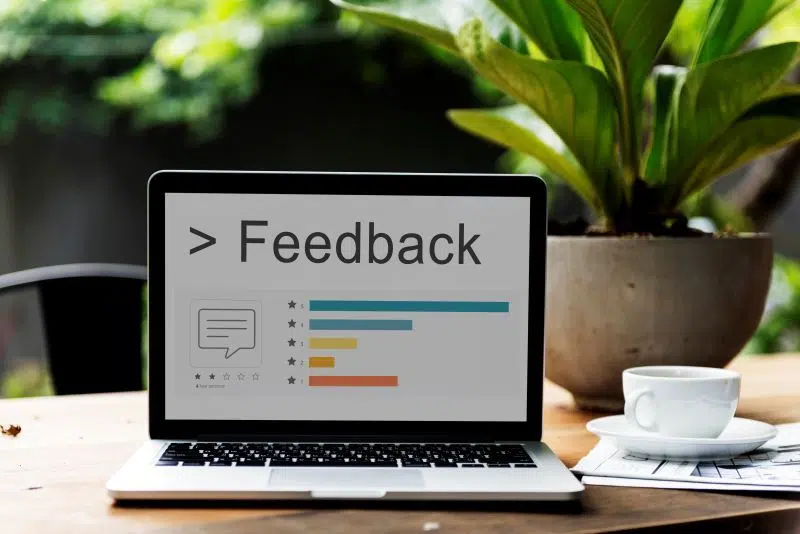Clever ways to improve employee performance
-
Lorea Lastiri
- February 24, 2023
- 14 min read

Employee performance is how well employees fulfill their roles and accomplish their tasks. Regardless of the industry, employee performance is an essential indicator of the company’s success. But how do you improve an employee’s performance?
An employee performance management software can help you focus on improving employees’ performance, productivity, and efficiency. However, the traditional yearly performance review will not suffice anymore. The administration should utilize the performance review information to craft performance management plans centered on employee engagement and development purposes.
When employees are engaged, motivated, and productive, they can quickly meet their work targets. Their improved performance will help the organization succeed and improve job satisfaction and reduce turnover over time.
Let’s explore the different strategies to help your team feel supported and motivated to perform well in their roles daily. Each way presented here may differ on the employee needs and the type of business industry, but these can be foundational steps you can take to boost performance and morale.
Here are the best practices to improve employee performance:
1. Use a time-tracking tool
One best way to improve employee performance is to provide valuable tools. It keeps employees engaged and empowers them to do their job well. A time-tracking tool, such as TimeCamp, can give you that.
![]()
Time trackers accurately and efficiently track employees’ time and productivity. The precise and automated record of a time tracking app on their time and tasks help employees eliminate the manual tracking error and focus on other essential tasks.
Aside from that, a time tracker is a valuable tool for employees managing teams or projects. It is a non-intrusive software that makes your employees feel safe when you monitor their activities and the project’s progress. It allows employees to self-manage their time and help increase the team’s productivity.
It also provides you with insights and reports into your team’s performance and your business in general. The reports include the summary of tasks, time spent working on each task, estimated time of the existing projects to finish, and the idle times. The information can help you identify which tasks take longer hours to complete and know the team’s problems and areas of improvement.
The good thing about time trackers is that they will not cost you a fortune. You can try our TimeCamp tracking app for unlimited users for free! Using this kind of time tracker is one of the best practices to improve employee performance.
👉 Read also: Work tracking: How to introduce time tracking to your team?
2. Set expectations in order to avoid misunderstandings
Avoid misunderstanding and confusion by setting clear expectations for the employees. Make sure to clearly explain to the employees why they were hired. Relay to them the tasks that need to be done in their job and what is expected of them. This is the crucial first step to increase employee performance.
It is also essential to establish the company values and visions because it lets them understand how their role and job can contribute to its success. Employees who understand are often willing to do more and do their best to accomplish their duties and responsibilities. It can, consequently, increase employees’ performance because they will be more focused on their job.
3. Set clear goals

Goal-setting lets you inform your employees of their expected role in a project and the tasks they need to do. With clear goals and plans, they become resourceful, manage their time effectively, apply their knowledge, or innovate new ways to achieve the goals and plans successfully. Thus, they become high-performing and highly motivated employees.
In setting goals, use the SMART framework. Make the goals:
- Specific,
- Measurable,
- Achievable,
- Relevant,
- Time-based
to drive employee performance. It also helps create workflow maps to help employees visualize how their tasks are connected and the end goal of a project.
These goals can provide insights and data, which is helpful for managers in measuring employee performance. The information can set a benchmark for performance levels than can still improve and provide real-time support and intervention to employees when necessary.
👉 Check our article about setting SMART goals with template
4. Develop employee performance metrics
Developing employee performance metrics will serve to understand how employees perform and evaluate employee performance. Clear performance metrics will prevent biases in performance appraisal and unnecessarily micromanaging tasks. Managers can also easily see whether an employee is meeting the performance goals or not.
In creating employee performance metrics, the company should conduct a job analysis to know the key performance indicators of each job and set a performance baseline. These tasks are assigned to the HR professionals in the Human Resource Department. Additionally, incorporating employee training services can ensure that employees have the skills and knowledge necessary to meet these metrics effectively.
5. Communicate effectively
Effective communication is an essential strategy for a good working relationship and improved work performance. Clear and effective communication can help employees understand their duties and responsibilities. Informing them of a clear and actionable description of the assigned tasks can prevent confusion, disengagement, and misunderstandings. It’s one of the most important factors to increase employee performance.
Managers of a team should improve their communication skills by regularly checking in and making conversation about tasks and reports to build rapport and trust with the employees. They can also set standard communication guidelines, including regular meetings and communication preferences. They should clearly communicate ways an employee can improve their performance to avoid frustration.
You can also communicate asynchronously, of course (this is often important in remote working environments with flexible schedules), which might involve using project management tools such as Basecamp or recording virtual meetings and presentations for your employees to view later. To get really creative with your communication, how about creating short, snappy videos utilizing a professional video maker to convey important company info? You can easily create video slideshows using a tool such as PlayPlay’s custom slideshow maker. Recording a webinar can also be a valuable communication tool, allowing employees to access important information and training sessions at their convenience, fostering continuous learning and enhancing overall work performance. Additionally, utilizing tools like video to text converters can further enhance communication within a company and improve accessibility by transcribing the important video content into written text. This can aid in clarifying information, making it more accessible to employees who may prefer written communication or need to refer back to the information later. These videos can be also used when onboarding new employees.
With good communication, managers can easily discuss performance deficits with an employee constructively.
Both accountability and authority are important in improving employee performance and overall team success. Balancing them is one of the best strategies to improve employee performance.
Accountability is the set expectations for each employee and having consequences in place. Meanwhile, authority is the power to decide and act on their own.
Managers can enforce positive accountability and increased responsibility to high-performing employees. However, if the employees perform poorly, let them be accountable for their performance. The managers can offer them support and encouragement to increase their focus and performance.
However, managers should remember to strike a balance between accountability and authority. A responsibility without much authority can hinder employees from performing at their best and fail project completion. However, if excessive authority is given to an employee, the power might be abused or misused, leading to conflict and issues.
A balance between these two means that when the managers assign responsibilities, they should also bestow a good amount of authority to make decisions and execute their ideas for the successful completion of jobs. It can boost overall performance and output.
7. Give regular feedback and ask for it
Feedback is crucial to boosting employee performance because it can help them understand how their performance is meeting your expectations. Regular feedback should be done in intervals and go both ways–employees receiving feedback from managers and vice versa.
Managers should give constructive feedback to the employees regarding their work, such as areas where they are excelling and areas that need improvements. If they want to improve staff performance permanently, feedback should be given regularly. To offer valuable feedback, it’s crucial to grasp employees’ strengths and areas for improvement fully. Thankfully, there are tools available for this purpose. One notable example is the Free 360 Review template, which is incredibly useful. This tool gathers feedback, offering a well-rounded perspective on an employee’s performance. In this sense, doing a regular employee performance review can serve as a vital tool for managers to sustainably enhance staff performance. Provided here is a selection of employee performance review phrases for managers to tailor according to their requirements, facilitating the delivery of constructive feedback to employees on their strengths and areas for development.

Employees, too, should be allowed to give constructive feedback to their managers. Employee feedback is a way to let the managers know they can better support or lead the team and improve areas on workflows and processes or tasks that seem to slow the team down.
This feedback strategy can give the direct manager and employees insights that can serve as guidance on working better to achieve goals collaboratively. It also offers employees empowerment in sharing their thoughts about work. Additionally, it can improve work relationships as the employees trust their manager to take into account their feedback and support them more for their work.
8. Give rewards and incentives
Rewards and incentives are also one of the best ways to boost employee performance. Offering rewards when employees are high performing and produce excellent work can encourage them to become more efficient and continually be productive. It can also inspire them to be more initiative and improve themselves to produce quality work consistently.
There are different rewards and incentive programs that a company can offer. Aside from monetary bonuses, you can offer:
- additional paid time off,
- late passes,
- gift cards,
- free meals,
- wellness programs,
- professional development opportunities.
👉 Read also our article on how to reward employees
9. Train and develop skills
Provide training and development programs like this one for your employees to keep them productive. Appropriate training can help them carry out their work with precision and boost their performance. It can also serve as an investment that will benefit them and the company because it will foster loyalty to your company and help you build your future leaders.
Creating a training course for your existing employees or new hires is a breeze if you use the right tools, Skyprep, Thinkific, or SendPulse, which provides LMS along with other useful perks like progress reports or certificate templates. However, you can also use third-party sources when conducting a training session like an AI Course Creator to develop personalized learning experiences for your teams. For example, if you want your employees to build up their Spanish vocabulary, you could set them up with an e-learning software development platform like Lingoda. Similarly, if you are looking to enhance the technical skills of your employees, specifically in Azure, consider offering access to Microsoft Exam resources online. These platforms provide Microsoft certification and guarantee proficiency in the latest technologies.
Craft training and development plans to lay out how employees will acquire needed skills for their job to prepare them to succeed in their roles. Application after the training can help them be motivated and productive when there is an avenue to apply what they have learned. You can encourage employees to continue professional development by letting them participate in conferences, workshops, coaching systems, and supplemental training programs.
Training and development programs can provide employees with growth opportunities. It can help expand and strengthen employees’ skills to improve their performance, increase engagement, and reduce turnover. Also, create a conducive environment for them to apply the skills by investing in modern tools like digital business cards to enhance their networking and lead generation efforts.
👉 Check our article on how to increase productivity, engagement and enjoyment of work
10. Promote internally
When you promote internally for a vacant senior position, you will save hiring costs and time because you only have already-trained employees who know and understand well the company’s mission, values, and objectives.
You will also motivate employees to do better because there are growth opportunities and career advancements within the company.
Internal promotion can serve as a highly effective incentive for employees because it can help improve employee performance and efficiency to reach organizational goals.
11. Create a positive work environment
A positive work environment is an environment that fosters respect, recognizes and appreciates employees accomplishments, and promotes wellness. It can help maximize employees’ potential, boost employee performance, and increase their job satisfaction. It can also help you keep talented and high-performing employees.
Creating a positive work environment starts with building a culture of well-being and support. You can offer competitive salaries, benefits packages, perks and incentives, and professional development opportunities to help employees feel appreciated. Recognizing their achievements through personalized rewards, such as a shirt with the employees embroidered initials, can also enhance their sense of value and belonging.
Additionally, you can also promote work-life balance for your employees by encouraging take regular breaks to prevent burnout. You can also reach out to them if you notice that they are stressed or distant. This way, you can build healthy employee relations, which is a solid foundation for a positive workplace environment.
Moreover, using a staff scheduling app can revolutionize your approach to managing workloads and fostering work-life balance among your employees. By enabling them to effortlessly view available shifts, swap schedules with colleagues, and request time off directly through the app, you empower your workforce with unprecedented flexibility. This flexibility isn’t confined to a single industry; whether you’re in hospitality, healthcare, retail, or any other sector, a robust scheduling app can streamline operations and empower employees to better manage their time.
12. Show employees gratitude they deserve

Acknowledging and being grateful for the employees’ efforts and contributions to the company can improve employee performance. It can help them feel valued and encourage them to do well in their task consistently.
A study conducted by the American Psychological Association found that employees who feel appreciated and valued tend to be more motivated to deliver high performance. Other studies also showed that there is higher job satisfaction in companies with a culture of gratitude.
You can express gratitude to your employees by celebrating small wins of employees who worked hard to achieve high-quality work.
You can also:
- complement them during meetings,
- give them a small token,
- give a handwritten note,
- take them out to dinner.
Regardless of how you show your gratitude, your employees will surely appreciate it.
13. Cut out unnecessary tasks
Excess or unnecessary tasks can hinder employees from focusing on and rob their time on essential tasks. Try not to give or lessen employees small and unnecessary tasks to help them focus on the high-priority assignments and big goals.
An example of unnecessary tasks is manually writing and approving personal timesheet data. The time spent on such a task can be spent to work on accomplishing goals that can contribute to the company’s success. Cut out unnecessary tasks by mentioning an example of recruiters. Recruiters can cut down on manual tasks by using an ATS to improve their hiring process.
14. Listen actively to employees’ perspectives
Active listening is one vital part of an effective two-way communication that can help improve employee productivity and performance at work. It also increases employee engagement as the employees feel that their input, suggestions, and concerns are being heard.
Managers must be open to hearing employees’ perspectives and concerns about their workflow, workload, and priorities. Employees are at the front lines and are more experienced in their work, dealing with a variety of work-related issues and concerns. So they really know well what their problems are, hindrances to quality work, issues, and points of improvement in the work processes.
Sometimes, listening needs humility to help managers acknowledge and listen to employees’ voices. Listening can make the removal of roadblocks in the flow of work easier. It can also help managers come up with a solution for an employee’s concern before it becomes a problem.
To observe active listening in the workplace, you can train managers to listen to employees’ concerns and suggestions. They have to remember that their role is to improve employee performance by addressing issues and concerns preventing them. They can inject their own perspective on the matters raised once the employees are done disclosing their issues.
15. Measure employee performance
Performance evaluation, also known as a performance review, is a way to measure and evaluate one’s work performance, identify strengths and weaknesses, provide feedback, and creates goals for future performance.
Regularly measuring an employee’s performance can let employees know where they stand at all times. It lets them understand what areas they are doing well, how they can improve themselves, how they can work that aligns with company values, and what is expected of them.
Effective use of performance reviews can allow managers to improve employee performance. With an efficient performance review process, managers can help identify requirements and challenges and understand what they need to improve.
It can also provide support and help in overcoming obstacles, encourage career growth and development, and create positive experiences with motivation and career advancement within the company.
In performance evaluation, employees can do self-evaluation or another evaluation method such as a 360-degree review. Self-evaluation lets employees reflect on their contributions, evaluate their own performance, and identify areas for growth and improvements.
Meanwhile, a 360-degree review is a method where an employee is evaluated and given feedback by her colleagues and managers. It also has reports with anonymous feedback related to a range of key competencies and key indicators of a job. It can be done using an anonymous feedback tool. It provides a balanced and less biased performance review.
16. Avoid distractions in order to be more productive
Distractions can affect employees’ performance and productivity. A study about distraction conducted by Michigan State University found that any slightest distraction with an average of 2.8 seconds of interruption can cut off your flow and shifts your focus to something else. It can result in committing more mistakes.

While it is necessary to minimize distractions during work, being too strict can hurt morale. Let the employees understand the value of time and its effect on the company.
To improve employee performance by minimizing distractions, you and your employees can follow some tips we will teach you. You can turn off notifications from your social media accounts during work hours. Take a small break every two hours to refresh your mind and engage with other workers.
Additionally, you can set and dedicate a time where you can read all your emails at once. You can also use noise-canceling earphones to avoid any noise or background distractions.
Lastly, employing an email verifier can help streamline your email management by ensuring that your inbox contains only valid and relevant messages.
👉 Check our article and find out how to eliminate distractions and be more productive
17. Don’t micromanage
Although micromanaging seems good because it lets you ensure that everything is done accordingly, it actually affects your employee’s performance and morale. It lessens work efficiency and undermines employees’ effort working at their peak performance.
A study by Sandra Collins and Kevin Collins revealed that micromanagement is one of the top three reasons why employees resign because of the intense negative impact. It is associated with low employee morale, poor performance and productivity, and low job satisfaction.
Once you have set clear expectations and provided orientation and training, your job is to let the employees do their jobs. You can monitor how an employee works and coach them on the sidelines whenever they have questions and concerns about their work.
Do not expect that every detail of their work will go through you. You can check whether they have accomplished the goals or met the milestones you set.
Letting the employees do their job while giving them a degree of autonomy and flexibility will help them grow, boost their morale, and increase their work performance.
👉 Read also: 15 Negative Effects of Micromanagement and How to Fix It!
18. Be open to work collaboration

Work collaboration can help boost employee performance because working on a project together can promote a higher level of thinking and higher work success. Sharing information with a co-worker can expand knowledge, widen their perspectives, and allow them to think creatively.
Collaboration between team members or other employees can also build trust and develop work relationships. Otherwise, it can lead to disengagement, isolation, and decreased creativity and productivity.
You can start the collaboration by assigning two employees to tackle projects, designating sets of tasks that are connected, or setting up team collaboration sessions. This can foster a work environment where new skills can be developed. Working together can also increase efficiency, come up with new innovative solutions, and improve team morale.
👉 Check also our article about effective team collaboration
19. Craft a Performance Improvement Plan
A performance improvement plan, also known as a performance action plan, is an excellent tool for improving employee performance because it allows employees to improve and succeed. It is only implemented when an employee is not meeting the performance goals. It explicitly addresses failures to meet specific job goals or improve behavior-related concerns.
Both the manager and HR professionals collaborate in crafting the goals and performance objects of the performance improvement plan. Additional support, such as frequent check-in conversations, can be provided to help keep an employee on track.
Although it is a good solution for improving work performance, communicating the plan to the concerned employee matters. The employee must understand that the plan is created solely to help them improve work performance. Otherwise, the employee may not exert much effort if they see the plan as the company’s last act before termination.
Conclusion
Employee performance has long been recognized as a crucial factor for a company’s success. However, most companies are willing to invest and work on improving their employees’ performance.
Although it is challenging to start good strategies for improving work performance, there are simple ways where you can start working on it. In this article, we have presented clever ways to improve work performance. These ways can also help your employees stay happy, engaged, productive, and satisfied while doing their best all the time.
Remember that employees do not need someone to monitor them to optimize their performance closely. They need the company’s support and resources to achieve their potential fully. So, you need to invest in your employees and invest in the right tools, such as TimeCamp.
TimeCamp efficiently and accurately tracks employees’ time, employee productivity, and is helpful in improving employee performance. It also provides necessary real-time reports to give you insights into your business. The tool has a free version packed with great features, so don’t worry about additional costs.


